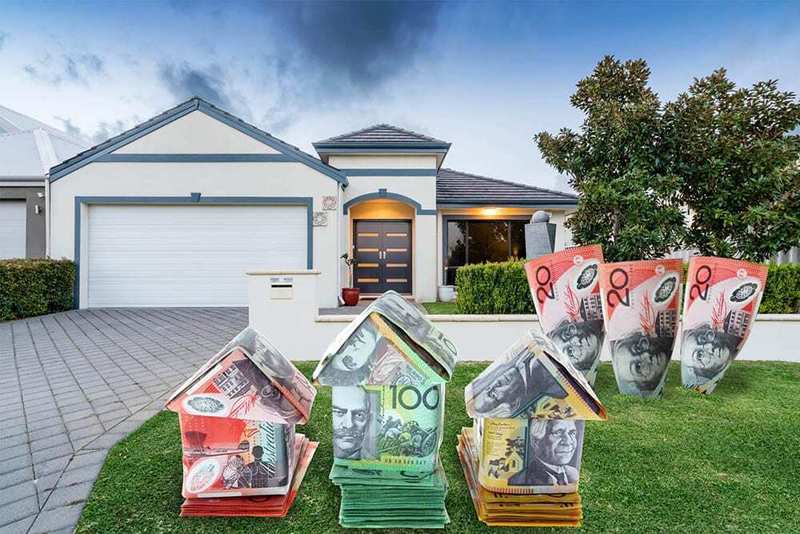Three key factors have combined to create a crazy property market in Australia but there’s a signal things may be about to change. By Ben Nash
Will rising interest rates mean house prices continue to rise?

Off the back of the Covid-19 disruption Aussie property prices have been going gangbusters, with ABS data showing property prices are up 16.8 per cent for the year ended June 2021.
These statistics come after a wave of predictions during the initial lockdown when property heavyweights were calculating price drops of around 30 per cent.
There’s no doubt there has been a heap of activity and interest from property buyers, and sellers taking some serious profits, but many are wondering if prices have risen too far too fast – and what the future might hold for Aussie property.
With the average home price across the country at record levels, the million dollar question really is, where are property prices going from here?
Record low interest rates
In November 2020, the Reserve Bank of Australia (RBA) dropped the cash rate to a record low of 0.1 per cent, and the banks responded by pushing mortgage interest rates below 2 per cent.
This meant that you could borrow $2 million and need to pay less than $40,000 in annual interest costs, significantly lower than the amount of rent you’d need to pay on an equivalent property.
The impact was felt almost immediately, sparking interest from many property owners who had previously been priced out of the market. And they entered in force, with record mortgage loan growth statistics being seen towards the end of 2020.
While interest rates have been at all time lows, we’re now starting to see the RBA and central banks around the world either increasing interest rates or signalling that rate rises aren’t far off.
Rising interest rates will make a big difference over time. Based on the ABS Australian average mortgage size of $549,493 paid over a 25 year period, if your interest rate is 2 per cent you pay total interest of $152,222, but based on a 3 per cent interest rate your interest costs are $235,234 – a difference of $83,012.
We’re also seeing financial market regulator APRA (Australian Prudential Regulatory Authority) imposing mortgage lending restrictions on the banks to slow the property market.
In Australia in particular, with record high debt levels, this will have an impact on households and flow through to property price growth.
Bunker syndrome
Another major factor impacting the property market over the last two years has been the Covid disruption to how we live and work. Aussies are spending more time at their home than ever before.
With the rise of the work from home trend, the fact many of us have been locked down, all combined with the fact we haven’t been able to travel interstate or overseas, many are looking around at their four walls and yearning for a little more space or a change of scenery.
We’ve seen a huge influx of people to areas that were previously considered ‘too far away’, with Aussies moving closer to beaches, into the regions, and even interstate to take advantage of more space at lower prices.
Constrained supply
While there has been a surge in demand for property, on the other side of the coin we’re seeing some of the lowest levels of supply (new property listings) in more than half a decade.
Based on data from CoreLogic, as of August 2021 there has been a drop of over 42 per cent in the number of properties listed for sale across Australia since the same time in 2018.
This means would-be property buyers are competing with more people for fewer properties, adding further upward pressure on prices. Housing supply is tipped to remain low in the short term, which is going to have a continued upward impact on property prices.
But where are property prices going from here?
It’s always difficult to know where prices are going in the short term, and given how often predictions from the ‘experts’ are wrong, for the average Aussie it’s a guessing game.
That being said, taking a long term view significantly reduces your property buying risk. With strong population growth (demand) and limited supply of property in desirable Australian cities, my view is that over the long term we will continue to see solid growth in property prices.
In good news for first home buyers, the government has repeatedly noted housing affordability is a key concern and that getting Australians into their first property is a priority. This suggests we will continue to see policies and initiatives to support first home buyers entering the market.
In good news for first home buyers, the government has repeatedly noted housing affordability is a key concern and that getting Australians into their first property is a priority. This suggests we will continue to see policies and initiatives to support first home buyers entering the market.
The wrap
Buying property is a big financial decision that will impact your financial situation for years to come, so it’s one you want to take the time to get right. But with so many mixed messages and conflicting opinions, it’s tricky to know exactly what a smart move really means for you.
Getting into the property market is no small thing, but if you take the time to put together a smart property plan it is possible. The sooner you start, the easier it is to make it happen. The first step is always the hardest, but once taken you immediately start building momentum you can leverage to make your next move easier.